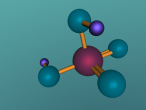Sulphuric Acid
SULPHURIC ACID
Sulfuric Acid, also known as Sulfuric Oxide or Sulfuric Anhydride is a compound of both water (H20) and Sulfur Trioxide (SO3), of which is generally a colourless liquid and exists as ice, crystals or gas. When Sulfur Trioxide is exposed to air, it emits white fumes and consumes water rapidly of which is the essential reaction needed to form Sulfuric acid. Sulfuric Acid is a transparent, dull, oily liquid that is very corrosive [ the gradual destruction of a substance by chemical action ]. It is used in the manufacturing of fertilisers, explosives, other of other acids, and glue. It can also be used during the preparation of in the purification of petroleum, the pickling of metals and the productions of in lead-acid batteries used in motor vehicles.
Sulfuric acid is a very strong acid due to its ability to completely ionise in aqueous solutions forming hydronium ions (H30+) and hydrogen sulfate ions (HSO4-). In contrast, when H2SO4 acts in a dilute solution the hydrogen sulfate ions are dissociated or separated, forming more hydronium ions and sulfate ions (SO42-). Not only is sulphuric acid an oxidising agent, reacting reluctantly at high temperature with many metals, carbon, sulfur and other substances, but it is also a strong dehydrating agent as it combines and intakes water heavily resulting in the burning of any organic materials such as wood, paper or sugar leaving behind a carbon-compound residue.
























Comments
Feedback
Annie you have not answered all the qsns in the task sheet. Where are your reflective qsns?
You needed more sources to verify what you already know.
What is the structure? Atomic mass etc